(This bulletin contains the third segment of my study of ‘The Airmen Who Died Twice’, which explains why two Soviet agents were carried on board a British Lancaster aircraft in September 1944, a flight that ended in disaster when the plane crashed into a hill in Norway. For the previous two segments, please turn to Part 1 and Part 2.)
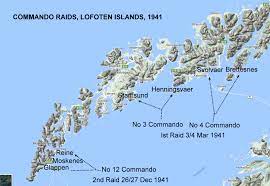
Chapter 5: Intelligence Manœuvres
The implications of co-operation between the RAF and the NKGB in infiltrating Soviet citizens with subversive objectives into a third country occupied by the enemy are highly significant. It is such a sensitive issue that one would have to conclude that one of Britain’s wartime intelligence organizations was involved. Admittedly, southern Norway was beyond the regular range where the Soviets were able to drop agents for intelligence purposes, but they would not have sought British assistance unless it were not a routine operation. It does not appear that they wanted to parachute in a spy or saboteur blind, without some sort of reception committee. Hence they must have been seeking help from British or British-trained contacts on the ground. Such a pattern is not unprecedented, but the utter lack of any reference, in the records of the RAF and the intelligence agencies, to the joint operation over Norway points not just to a highly clandestine operation, but also to a monumental embarrassment when it ended so dismally and tragically.
The two institutions that maintained networks in countries occupied by the Nazis were the Special Operations Executive (SOE) and the Secret Intelligence Service (SIS, sometimes known as MI6). The first was essentially a sabotage organization, a civil unit reporting to the Ministry of Political Warfare, although many of its leaders were military men. It had been created by Winston Churchill in 1940, specifically to cause havoc behind enemy lines. SIS, on the other hand, was an intelligence-gathering service with some history that worked more by stealth. It resented SOE’s very existence, since the business of sabotage tended to draw the attention of the enemy, while the agents of SIS worked as quietly as possible. Moreover, the fact that SOE had agents in the field meant that they were also a provider of intelligence. Claude Dansey, the assistant chief of SIS, made it his mission to undermine SOE whenever he could.
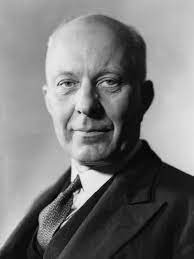
SOE had an occasionally very strained relationship with the governments-in-exile of the countries where they built their networks. Hugh Dalton, the first minister responsible for SOE, was a socialist who viewed the mission of his organization to enhance the possibility of implementing socialist ‘revolutions’ throughout Europe after the Nazi foe had been defeated. Such a strategy was anathema to most governments-in-exile which, composed of members of the pre-war ruling class, hoped to reinstall the previous form of government, and its attendant privileges, after the war. In addition, Dalton was a notorious showman, who misrepresented SOE’s achievements in Norway, and over-promised to Churchill what the section could achieve. In turn, Churchill, ever the romantic, in February 1942 told the Norwegian government-in-exile that Norway would be the first country to be liberated – a foolish claim.
On the ground, however, much of the strongest resistance to the fascists came from underground communist groups, who had suspended their disgust when the Nazi-Soviet pact occurred. After June 1941, when Hitler invaded the Soviet Union, and Stalin’s dictatorship became an ally of the western democracies, these cells renewed their vigorous ambitions for proper (not Daltonian) revolution. A pattern across Europe occurred whereby weapons and supplies dropped by parachute, intended for patriot forces, frequently ended up in units taking orders from Stalin. The perennial problem with SOE was that its strategy was apparently to prepare patriot armies for the coming arrival of British troops, but that event often took years in the making, or never happened at all, which was damaging to morale. Moreover, there was a permanent risk of arms caches being discovered by the Germans, or simply falling into disrepair. SOE’s management of expectations was poor, to say the least.
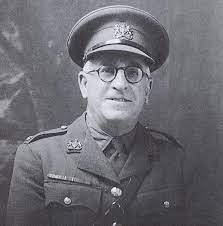
This pattern repeated itself in Norway. Before the war, the SIS station in Oslo reported through Stockholm, but after some embarrassing events in Sweden, Frank Foley (who had been posted to Oslo in September 1939) returned to London in early 1940, and was put in charge of the whole of Scandinavia and the Low Countries. The Royal Navy soon made demands on SIS for intelligence on German naval movements along the coast. The arrival of SOE agents complicated matters, however: Norway was too thinly populated for networks to remain isolated, and there were several clashes between the two organizations. Moreover, SOE initially worked independently of both the Norwegian government-in-exile, and of Milorg, the military arm of the Norwegian Home Front, which, despite its name, was more focused on the future liberation of the country than attention-drawing sabotage adventures. SOE kept clear of it, as it regarded its security as lax. Likewise, the small communist groups also stayed apart from Milorg. They criticized it for its passivity, and were less concerned about Nazi brutalities.
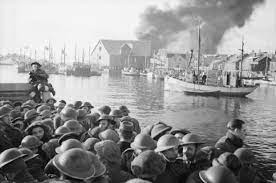
Thus some harsh lessons were learned. The reprisals after the Lofotens raid of December 1941 triggered Norwegian animosity to SOE, which led to the establishment of a Joint Anglo-Norwegian Committee in London in February 1942. In January, a new SOE Norwegian section was split off from the Scandinavian unit, and the very pragmatic John Wilson had been appointed its head. Yet it took time for the Committee to exert any influence. In April 1942, mismanaged landings at the community of Telavåg, involving mis-steps by both MI6 and SOE in which two Gestapo officers were killed, led to fearsome reprisals. SOE accordingly made contact with Milorg in September of that year, in a spirit of collaboration. It took the first major operation undertaken by SOE and Combined Operations forces (commandos), the November 1942 attempt to land gliders in an attack on the Vermork heavy-water plant, to change policy. The assault was a disaster. The participants were executed: severe reprisals on the civilian population followed. Both Milorg and the government in London were horrified, and their disgust led to a more cautious approach to sabotage. The eventual sinking, in February 1944, of the steamer carrying heavy water on Lake Tinnsjo bolstered SOE’s reputation, but twenty-six persons were drowned in the process.

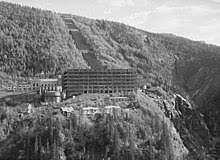
1943 was a transition year. After Milorg had supported, in April, an attack by the communist Sunde’s group on labour offices in Oslo, the government in exile called it to stop collaborating with communist organizations. In May, at a conference in Sweden, Milorg agreed that its future activities would be determined by the Allied Supreme Command, and that its mission would be to prepare for liberation. Norway had a role to play in diversionary exercises away from the main European theatre (Operation TINDALL, as part of the COCKADE deception plan), and some weaponry was parachuted in for the Norwegian resistance. Yet SOE itself suffered a major setback that autumn, when the infiltration of its Dutch and French circuits was discovered by the Chiefs of Staff. SOE survived (thanks to Churchill’s intervention), but was put under military control, the Norwegian Section of SOE coming under Special Forces Headquarters in May 1944. Soon afterwards General Eisenhower sent out a stern message to the Norwegians that, in the wake of the Normandy landings, no national uprising should take place, as the Allies had no immediate plans to invade their country. A predictable lowering of morale ensued, and, in recompense, some steady carefully-targeted sabotage operations were encouraged.
The early months of 1944 had created a new climate, however. In February, the Foreign Office reported that uncontrolled sabotage by the Communists was increasing, sometimes with the aid of arms supplied by SOE. That was not part of the plan. In May, the Germans tried to press-gang Norwegian workers for work in the Reich, and hundreds of youths fled to the mountains, thus creating a kind of Norwegian ‘maquis’. An unuathorized but efficient group known as the ‘Oslo Gang’ reached a peak of sabotage activity in August. On August 17, Milorg executed a very damaging operation in which an oil storage depot at Son, on the Oslofjord, was exploded. More serious plans for guerrilla attacks were forged, and in May 1944, four sites were identified for the congregation of partisans, one of which was at Elg, north-west of Oslo – a few miles from Nesbyen, the site of the crash. Two men parachuted into Elg on August 31, 1944, and over a hundred men assembled there, with weapons and food stockpiled. That same month Jens Hauge, the head of Milorg, had travelled to London for four weeks of consultations with SOE, Army chiefs, the Ministry of Economic Warfare, and the Norwegian government-in-exile, and he crossed back into Norway from Sweden.
Meanwhile, SIS in Sweden had been experiencing its own tribulations. The Admiralty applied pressure on the organization to provide intelligence on Kirkenes, on the Norway/Russia border, which led to a catastrophic joint project with the Soviets, where two SIS agents were flown into an airbase in August 1942. Instead of parachuting them in promptly, however, the Russians held them for two months, and then dropped them, improperly equipped, into Finland rather than Norway. They were captured, handed over to the Germans, and shot. Soon afterwards, the hapless head of station John Martin was replaced by the Russian-speaking Cyril Cheshire, but the lessons from trying to collaborate with the Soviets on clandestine operations appeared not to have been passed on, and properly internalized.
Improbably, the closest cooperation between SOE and SIS occurred within the section of SOE that worked in the Soviet Union. At the end of 1941, an exchange of missions between London and Moscow had been set up, with an old WWI Russia veteran George Hill appointed as leader. He took a small group with him to start negotiating with the NKVD on shared sabotage endeavours, while the obdurate Colonel Chichaev took up a corresponding post in London. The whole project was highly controversial, since the Soviets wanted SOE help in parachuting agents into Western Europe, which was out of reach of their aircraft. The governments-in-exile would have had a fit if they had known that a British intelligence unit was abetting a potential Communist revolution in their home countries. Moreover, the Foreign Office – quite enthusiastic about ‘co-operating’ with Soviet diplomats – was alarmed at the prospect of collaboration with Communists in more murky quarters.
As it turned out, the operation (named PICKAXE) was for many reasons a disaster, and incriminations started to flow both ways. Collaboration was called off in practical terms by early 1944. Yet by then, the SOE mission in Moscow had been badly abused by the NKGB (as the NKVD became). Hill had probably been appointed by Menzies, the head of SIS, and he represented both SIS and SOE in some of his agent management roles. Unfortunately his cipher-clerk, George Graham (who was of Russian aristocratic birth), allowed himself to be suborned by NKGB intrigues, with the result that Soviet intelligence gained access to SIS codes and cyphers. How that helped Stalin in his preparation for Yalta is an untold story.
A further group in the drama was the 30 Mission, a British military unit sent out to Moscow in 1941, charged with exchanging military intelligence as a way of improving Allied combat against the Nazis. This was another troubled enterprise, since the officers who went there mostly returned in disgust after a short spell, frustrated by Soviet obtuseness and secrecy. Its negotiations had to take place via contacts in a department of the NKGB, and its direct exchanges with the Red Army (and even more so, the Air Force, which was subsidiary to the Army and Navy) were few and constrained. With the Arctic Convoys playing a large role in sustaining the Soviet Union’s goodwill, and ability to counter the Wehrmacht, a large body of sailors and other men was required in Murmansk, a presence that alarmed the NKGB, for fear of ideological infection of the local populace. 30 Mission was the hub through which all the problems and challenges had to be routed: General Martel, and his successor, General Burrows, tried vainly to make the Soviets see reason, and concluded that resolution and hard bargaining produced better results than attempts to please their reluctant hosts.
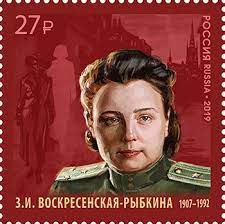
Last but not least was the offensive arm of the NKVD/NKGB. In July 1941, after Barbarossa, Pavel Sudoplatov was appointed director of the Administration of Special Tasks, charged with sabotage and political assassination abroad. (Sudoplatov had been overall responsible for the murder of Leon Trotsky in 1940.) One of his closest associates was a woman called Zoya Voskresenskaya, also known as Rybkina, via marriage, and as a working alias, Madam Yartseva. Rybkina was sent by Sudoplatov to Stockholm, ostensibly as the press attaché to the Ambassador, Alexandra Kollontai, but in fact as the head of the NKVD station, which exercised a firm control over the activities of all the staff. Her husband, who went by Boris Yartsev as a junior diplomatic official in Stockholm, returned to Moscow in 1943, was present at Yalta, and met his death in Czechoslovakia, in 1947, in one of those mysterious car crashes that prematurely took the lives of intelligence officers who fell out of favour.
In his memoirs, Sudoplatov wrote glowingly about his protegée, who had actually been his handler in Helsinki at the beginning of his career. In 1942, Sudoplatov was also put in charge of collecting information about atomic weaponry, and agents working for Rybkina in Sweden gained information from Lisa Meitner, who had discovered fission with her nephew, Otto Frisch. Sudoplatov claimed that the British knew about the NKGB’s networks in Sweden, and that they were collaborating with the Soviets on joint sabotage operations in Europe. Like many agents who worked under Beria, she was purged (but not imprisoned or killed) after Beria’s own execution.

Yet the most remarkable aspect of Rybkina’s possible contribution to this story is the journey she made to the United Kingdom in February 1944. The VENONA transcripts inform us that Vasily Razin, the First Secretary at the Stockholm Legation, informed Lt.-General Pavel Fitin, the head of the Foreign Intelligence Directorate in Moscow, that IRINA (Rybkina) had successfully arrived in England, by air, on February 6. This flight was operated as part of the so-called ‘ball-bearing’ run, almost certainly deploying a modified Mosquito. It was actually run by the Norwegian Air Force, but under civilian registration, with crews wearing BOAC uniforms and carrying British passports. It was a harrowing and dangerous experience: there was room for only one clandestine passenger, in the bomb-bay. Niels Bohr, the atomic scientist, was one beneficiary, and almost died from lack of oxygen.

Why permission should be granted to a known Soviet intelligence agent to take advantage of such a facility is mysterious, and can only point to some very high-level and secret negotiations. What is more, soon after Rybkina arrived, Colonel Chichaev had a private meeting with Colin Gubbins of SOE, a record of which may never have been made. Whether these events were related to the sudden movements in August, 1944, when Colonel Burrows of 30 Mission was recalled to London, his opposite number in the NKGB, General Slavin, disappeared abroad on some unspecified business, Jens Hauge, the head of Milorg, also travelled to London to meet with SOE officers, and two SOE agents were parachuted into the mountainous country north-west of Oslo, is still a matter of speculation. The coincidences are remarkable, yet the need for extreme secrecy over the negotiations with Stalin probably indicates that the particulars of the parachute drop were not on the agenda of the meetings.
Chapter 6: Stalin’s Organs

The rationale behind Stalin’s constant re-organization of his security apparatus is sometimes hard to unravel. In 1943, he separated some functions from the NKVD (The People’s Commissariat for Internal Affairs) into a structure that had briefly existed in 1941, the NKGB (The People’s Commissariat for State Security). The latter was supposed to focus on the territories that had been briefly held between 1939 and 1941, and were shortly expected to return under Soviet rule, such as the Baltic States. But it lacked ample security forces. The NKVD had its foreign mission withdrawn, and concentrated on domestic affairs, such as surveillance of the citizenry, and management of the GULAG. At the same time, Stalin created a new body, SMERSH (‘Death to Spies!’), peeling off those cadres in the NKVD responsible for monitoring disaffection and cowardice in the armed forces. According to Pavel Sudoplatov, Stalin made this move to prevent his NKVD chief Lavrenty Beria from interfering with military promotions – and demotions.
SMERSH existed between April 1943 and May 1946. Its head was Viktor Abakumov, who, like many of Stalin’s security and intelligence chiefs, came to a grisly end. Yet, while its initial task was to root out corruption in the military, it soon took over a more aggressive role identifying and eliminating real or imagined opponents of the Soviet regime in newly conquered territories. Moreover, while the initial threat was identified as German infiltration of the armed forces, its innate suspicion of foreigners in general meant that it turned its attention on the presence of Allied forces on Soviet territory. Notably, supervision of the American air bases in Ukraine had become the responsibility of SMERSH, alongside keeping a close eye on the naval mission in Murmansk supporting the convoys, and on the short-lived presence of PARAVANE operational staff at Yagodnik.
Foreigners might not only be spies: they might also exert a pernicious influence on Soviet citizenry, and the records show that the organs assiduously kept a watch on any liaisons between Soviet citizens and members of the visiting armed forces and their support crews, and followed up with dire threats. Yet the war diaries of the PARAVANE operation do indeed show that some officers showed a more than casual interest in Soviet installations of technology, such as communications. The fact that such interest paled into insignificance against the wholesale theft of Western technology and ideas that the GRU (Military Intelligence) and the NKVD/NKGB had been undertaking for years was irrelevant to the earnestness of SMERSH’s hunt to extirpate any such activity.
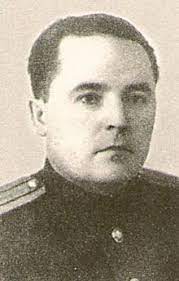
A SMERSH officer submitted a report on the PARAVANE operation on October 6, 1944, casting doubts on the true motives of the RAF members who led it. The report was probably written by a sadistic thug called Mikhail Ryumin, who was head of the Counter-Intelligence White Army Flotilla, reporting directly to Admiral Panteleyev in Archangel and Abakumov in Moscow. Ryumin had moved up the NKVD ranks by being a protégé of Nikolai Yezhov, the short-lived executor of Stalin’s most dreadful purges, but had survived after Yezhov’s execution. He was later a prime mover in the so-called ‘Doctors’ Plot’, a mirage of Jewish conspiracy conceived by Stalin, and he even denounced his boss, Abakumov. Stalin fired him for incompetence, however, and, after the dictator’s death, Beria had Ryumin arrested and executed.
Ryumin’s report shows that he had a hazy understanding of the PARAVANE mission, emphasizing the failure of the attack on the Tirpitz as a cover for the true objective of seeking information about Soviet military installations (“It can be concluded that under the pretext of the shuttle operation, the flight had an exclusively reconnaissance purpose.”). He refers to the loss of one Lancaster over Norwegian territory, but indicates mistakenly that the return flights were undertaking another bombing raid on the battleship. As evidence for his conclusions about ulterior purposes of the mission, he lists misleading data about the weight and explosive capacity of the Tallboy bomb, the pilots’ cancellations of call-signs on the radio, and an understatement of the number of officers and men who would be arriving (which was, in fact, justified).
The fact that he had been kept in the dark about the true circumstances surrounding the change of plan is shown by the fact that he attributes the haphazard landings at various airfields to a deliberate ploy by the RAF to determine the location, size, and condition of those same airfields. Of course, his report may have been crafted to show the appropriate communist diligence in disparaging the RAF’s failure to sink the Tirpitz, the objective of Operation PARAVANE. Its timing, moreover, could be significant: it was submitted to his boss, Abakumov, three days before the start of the so-called ‘Tolstoy’ Conference in Moscow, where Stalin hosted Churchill and Eden, and the notorious agreements about the carve-up of Europe were made without Roosevelt’s presence.
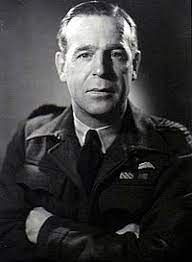
Yet some inappropriate nosing around was undertaken by some of the RAF contingent (see Chapter 3). Captain Abercrombie, who had joined the (military) 30 Mission in Moscow the previous April, sought permission to take photographs without constraints, and asked questions about the radio and power stations in Archangel. Ryumin also had negative things to say about a Lieutenant-Colonel Happen, who, after a request by Group Captain McMullen to travel via Moscow, Stalingrad and Tehran to Cairo been rejected, apparently made disparaging remarks and spread ‘anti-Soviet sentiments’. The fact was that the RAF members generally had good relations with their opposite numbers in the Soviet Naval Air Force, and probably said too much in unguarded moments. Such conversations were bound to be overheard by or reported to the SMERSH commissars embedded in the units. (An Appendix to the War Diary refers to ‘the sprinkling of N.K.V.D. personnel (male and female) to check that the interests of the Communist Party are not prejudiced’.) The Diary nevertheless expresses great appreciation of the support they received, especially from Colonel Loginov, who was Chief of Staff to the Commander of the Air Forces of the White Sea Flotilla, and McMullen wrote generous letters of thanks. These commendations (which may have been largely political) would have cut no ice with Ryumin.

One significant Soviet officer who was familiar with Ryumin (and had a low opinion of him) was Pavel Sudoplatov, who had been appointed head of the NKVD ‘Special Tasks’ unit in July 1941. Sudoplatov, who had engineered the assassination of Trotsky, was thus responsible for sabotage behind enemy lines, as well as further assassinations. He also took on a major role in handling disinformation exercises to fool the Germans about a potential anti-Soviet movement within the Soviet Union, as well as Operation MONASTERY, which aimed to penetrate the Abwehr’s intelligence network behind Soviet lines. Abakumov was jealous of Sudoplatov’s role, wanting it for himself, and challenged him in 1942 to turn over all radio deception games against the Germans to him. He was partially successful, but Sudoplatov kept the MONASTERY operation, as well as the COURIERS operation, which claimed the existence of an anti-Soviet faction within the Russian Orthodox Church. Thus the rivalries between Sudoplatov and Abakumov may have contributed to some mis-steps in the execution of the mission to Nesbyen.
The relevance of these connections is important in the PARAVANE story because of Sudoplatov’s relationship with the NKVD officer Zoya Voskresenskaya, also known as Rybkina, after her marriage to another NKVD officer. She had worked for Sudoplatov at the beginning of the war, planning sabotage, and training partisans, when she and her husband were suddenly sent to Stockholm, where she was appointed nominally the press attaché to the Ambassador, Alexandra Kollontai, and took up the name Yartseva. Stockholm, the capital of Sweden, a neutral country, was, like Portugal’s Lisbon, a nest of spies and intelligence-gathering, and it controlled through regular communication the Stalinist faction of the Norwegian Communist Party, as well as providing it with funds. Yartseva was actually the most important person in the Embassy, and was also responsible for controlling the receipt and transmission of all the intelligence coming from the Soviet Union’s Rote Kapelle network in Germany. (Ian Fleming’s Rosa Klebb was reputedly based on her.)

Sudoplatov’s relationship with Yartseva went back many years, since she had actually been his controller in Finland in the early 1930s, and they stayed in close touch. Yartseva had more recently been involved with Sudoplatov’s COURIERS operation, controlling members of the clergy in Kalinin. Sudoplatov also claimed that Yartseva was part of his management team on the ENORMOZ (atomic weapons) project, but his version of events has been challenged by Western experts. Yet they did have another important colleague – Colonel Chichaev, the NKVD representative in London charged with liaising with SOE and its Russian section, and maybe even handling some of the NKVD’s nest of spies. Chichaev had spent time at the Stockholm Embassy in 1940, working with Yartseva.
These threads would come together as Stalin’s strategy for Scandinavia took shape. His ambitions were overall modest for neighbouring territories that were not to be occupied by the Red Army. Finland was problematic. It had a long border with the Soviet Union, and after losing a war in 1940 against the Communist regime – in which the Red Army was at first humiliated – the country had dangerously aligned itself with Nazi Germany, in the belief that Hitler would be the victor. While Stalin respected the Finns for their courage, he resolved to exploit them because of their support of the Fascists rather than waste military forces in conquering them. He was anxious to gain strategically useful territories from them, such as islands in the Gulf of Finland, in order to give him protection for the port of Leningrad and the Baltic States, and regain ownership of the Petsamo (Russian: Pechenga) region in the far north, with its valuable nickel mines. Moreover, the Communist Party was strong in Finland, although Stalin had purged many of its leading members in Moscow.
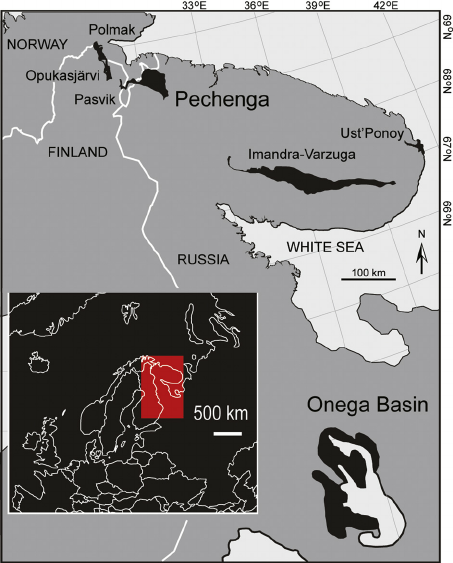
Sweden was not really a consideration: it had remained neutral during the war, and was geographically not so relevant. Norway had been occupied by the Nazis, and harboured a somewhat subdued resistance movement. Despite the lack of contiguity, some of Stalin’s ministers had pressed for Sweden and Norway to come under the Soviet ‘sphere of influence’, with Norway’s Communist Party a potential asset. The Norwegian government-in-exile was fearful that the Red Army would make incursions through the north of the country, and in early 1944 made appeasing overtures through the Soviet ambassador to avert the possibility. While Stalin probably found satisfaction in keeping that threat alive, and gaining concessions from the Norwegians, he in fact did not want to move Red Army divisions to Norway. He would prefer that the British take responsibility for clearing the country of Nazi troops, although he did not want the latter pouring into Northern Russia. (The negotiated restoration of Pechenga would present the Soviet Union with a narrow border with Norway.) Thus, in the summer of 1944, he pressed Churchill and Eden to take a leading role in the liberation of Norway, and gained a concession from them in August that Finland naturally fell in his bailiwick, and that the British had no strategic interests there.
The western Allies wanted to consolidate their assaults into western Europe and Germany before dealing with the Wehrmacht in Norway: to that end the Chiefs-of-Staff had developed an operational feint called RANKIN designed to pin German troops in Norway through the D-Day invasions. On the other hand, the British did not want premature uprisings in Norway, hoping to preserve the partisan forces to hold their fire until the real day of reckoning. They were aware, however, of maverick Communist Party guerrilla units continuing to cause trouble. Yet Stalin, as in France, did not want any Communists to engage in provocative behaviour and risk turning the Americans against him before the Nazis had been beaten. Thus British and Soviet needs in the area began to converge. Stalin wanted to sign a pact with Finland, using it as a proxy. He planned to demand from it the harassment of German divisions in the north of the country, as he wanted to move the few divisions he maintained on the Finnish border to the vital German battlefield, and he sought British assistance in the endeavour.
On September 19, 1944, a few days after the PARAVANE Operation was executed, the Moscow Armistice was signed by representatives of Finland, the Soviet Union and Great Britain. The British War Cabinet had reviewed its protocols as early as September 7. They laid out some strict conditions: for example, the withdrawal of Finnish troops to the frontier as it existed in 1940; Finland to be responsible for disarming German land, air and naval forces in the country; the transfer to the Soviet Union of critical territories, such as Pechenga; the provision of up to three hundred million dollars’ worth of goods as indemnification for Soviet losses; and the handover of airfields in southern Finland for the Soviets to attack German forces in the Baltic States. Whether this last item was part of a quid pro quo with the British for the use of Soviet airfields in the attacks on the Tirpitz is not stated. But the timing is intriguing, and Stalin was accustomed to including ‘secret’ protocols in his political agreements.
The negotiations that led up to this agreement are regrettably opaque. Yet the intrigues in sending Yartseva to London in February 1944, and the subsequent meetings (see Chapter 5) must have had some serious objectives. Stockholm was a notoriously isolated location: it took the Petrovs nine months to reach it from Moscow in 1942. For Yartseva to gain approval from the British and Norwegian governments for a valuable place on the ball-bearing run to Leuchars in Scotland (and presumably a return flight) must have meant that they considered she had both clout and information of great value, and that it was both safe and wise to allow her to have discussions with Chichaev. What political backdrop could have led to such a concession?
(The final part of this story will appear on April 15.)
